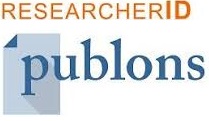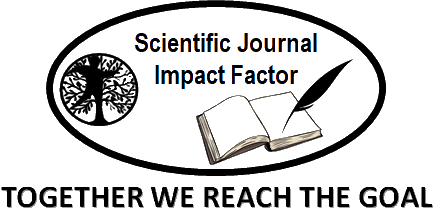Évaluation Des Facteurs Environnementaux Influençant Les Concentrations De Résidus De Pesticides Dans Les Bananes Plantains Cultivées A Lubumbashi
Abstract
For the purpose of this study, we set ourselves the general objective of evaluating the environmental factors that may influence the concentration of pesticide residues in plantains cultivated in Lubumbashi, in order to understand the potential risks to human health and the environment.
To achieve this, we established the following specific objectives:
- To identify the most commonly used types of pesticides in plantain plantations in Lubumbashi.
- To analyse agricultural practices and crop management techniques that could contribute to the accumulation of pesticide residues.
- To determine the environmental conditions (climate, soil, etc.) that affect the dissipation or persistence of pesticides in plantains.
- To assess the potential impact of pesticide residues on the quality of soil, water, and air in plantain cultivation areas.
- As part of this research, we used a semi-structured survey questionnaire specifically designed to collect data on agricultural practices, perceptions of pesticide-related risks, and plantain consumption habits.
This is a descriptive, cross-sectional study conducted using an environmental and community-based approach. It aims to identify and analyse the environmental and socio-economic factors influencing the potential presence of pesticide residues in locally cultivated plantains.
The study was conducted over a one-month period, from 1 to 31 October 2024, coinciding with a season of intense agricultural activity in the Lubumbashi region, which is conducive to evaluating the use of chemical inputs in plantations.
After analysis and interpretation of the results, the following findings emerged:
The majority of households, headed by married adults with modest incomes, purchase large quantities of inexpensive food, thereby exposing their families to pesticide residues, particularly through plantains. Consumption of these fruits, often managed by women, remains low (15.83%), but may result in chronic exposure for heavier consumers. Purchase prices are mainly concentrated between 375 and 525 CDF, limiting access to higher-quality products.
Keywords
Full Text:
PDFReferences
. Gondard-Delcroix, F., & Rousseau, D. (2004).La gestion du risque: approches et perspectives. Presses Universitaires de France.
. Rohrmann, B. (2008).Risk perception and risk communication: A review. Risk Analysis, 28(2), 587-598. https://doi.org/10.1111/j.1539-6924.2008.01034.x
. Hardaker, J. B., Huirne, R. B. M., Anderson, J. R., & Lien, G. (2015). Coping with risk in agriculture. CABI.
. Cordier, J.-P., Morin, J.-P., & Lemoine, S. (2008). Les risques environnementaux et la gestion durable des risques. Éditions De Boeck Supérieur.
. Gilard, D. (2015). Les risques et la vulnérabilité dans l’analyse économique. Éditions L'Harmattan.
. Chavas, J.-P. (2004). Risk, agriculture, and the environment: Managing risk in a changing world. Agricultural Economics, 30(3), 187-195. https://doi.org/10.1016/j.agecon.2003.11.003
. La Rovere, E. L. (1997). Introduction to risk analysis in agricultural systems. In L. G. Hoag & G. A. Keil (Eds.), Risk management in agricultural production systems (pp. 123-145). Elsevier.
. Baruwa, O. I., Oladele, O. I., & Adesina, J. O. (2015).The role of risk perception in agricultural decisions. Agricultural Systems, 137, 16-23. https://doi.org/10.1016/j.agsy.2015.03.004
. Fakayode, S. B., Adebayo, A. I., & Olayanju, T. M. (2012). Risk and uncertainty in agricultural production: A case study of banana plantain cultivation. African Journal of Agricultural Research, 7(24), 3593-3599.
. Sulewski, P., & K³oczko-Gajewska, Z. (2014). Risk management and decision-making processes in agriculture: A comprehensive analysis. Agricultural Economics, 60(8), 347-356.
. Islam, M. S., Bhuiyan, M. N. H., & Gazi, M. A. (2021). Farmers’ risk perceptions and risk management strategies in banana cultivation in Bangladesh. Journal of Agriculture and Rural Development, 19(1), 22-30.
. Ahmad, I., Khan, M. A., & Zia, M. (2020).Assessing risk management strategies in the agricultural sector: A study of banana producers in Pakistan. Journal of Risk Analysis and Management, 12(4), 145-154.
. Akhtar, M., & Abbas, M. (2017).Understanding risk management decisions in banana production: A case study from Punjab, Pakistan. Pakistan Journal of Agricultural Sciences, 54(2), 265-274.
. Ullah, S., Akram, Z., & Mehmood, T. (2015a). Risk perception and its impact on agricultural decisions: A case study of banana farmers in Pakistan. Environmental Economics and Policy Studies, 17(3), 491-501. https://doi.org/10.1007/s10018-014-0087-6
. Ullah, S., Akram, Z., & Mehmood, T. (2015b). The role of risk perception in the adoption of sustainable agricultural practices in banana farming. Agricultural Sustainability, 9(2), 31-38.
. Meraner, M., & Finger, R. (2017). Farmers' risk perception and risk management strategies in agricultural production: The case of crop insurance. Agricultural Systems, 151, 16-23.
. van Winsen, F., & Boogaard, B. K. (2016). Social and cognitive factors affecting risk perception in agricultural decision-making. Journal of Rural Studies, 45, 112-119. https://doi.org/10.1016/j.jrurstud.2015.12.006
. Sapkota, S. (2021). Perceptions of risk in banana farming in the tropics: Evidence from Nepal. Tropical Agricultural Research, 32(2), 235-245.
. Sjöberg, L. (2000). Perceived risk and the role of psychological factors in risk decision-making. Risk Management, 2(3), 193-210.
. Van Winsen, F., Boogaard, B. K., & Nelen, R. (2011). Farmers’ risk perception and risk behavior: A psychological approach to decision-making in agriculture. Agricultural Systems, 104(7), 533-538.
DOI: http://dx.doi.org/10.52155/ijpsat.v51.2.7356
Refbacks
- There are currently no refbacks.
Copyright (c) 2025 Pascal Pambi Mukanga

This work is licensed under a Creative Commons Attribution 4.0 International License.



















